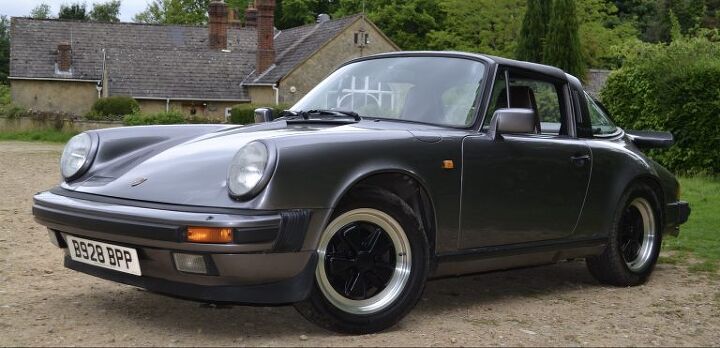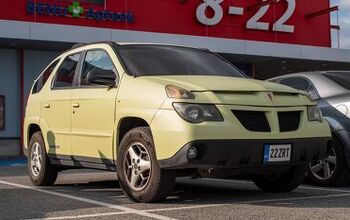The Man Who Saved the Porsche 911 From Oblivion Has Died

It’s kind of difficult to imagine if you aren’t old enough to remember, but there was a period in the 1980s when the Porsche 911 was almost removed from the automotive landscape. In 1979, Porsche had made plans to replace the 911 with the new 928. The working logic was that the 911 was too quirky, impractical, and a bit of a handful. Porsche executives figured it just made good sense to swap it with something that had a broader appeal, especially as the company’s finances weren’t looking particularly robust at the time.
However, in 1981, Porsche AG found itself with a new chief executive — a German-born American named Peter Schutz. And he was having absolutely none of that nonsense.
“The decision to keep the 911 in the product line occurred one afternoon in the office of Dr. Helmuth Bott, the Porsche operating board member responsible for all engineering and development,” Schutz said in Tony Corlett’s Porsche 911 3.2 Carrera: The Last of the Evolution.
“I noticed a chart on the wall of Professor Bott’s office. It depicted the ongoing development schedules for the three primary Porsche product lines: 944, 928 and 911. Two of them stretched far into the future, but the 911 program stopped at the end of 1981. I remember rising from my chair, walking over to the chart, taking a black marker pen, and extending the 911 program bar clean off the chart. I am sure I heard a silent cheer from Professor Bott, and I knew I had done the right thing. The Porsche 911, the company icon, had been saved, and I believe the company was saved with it.”
Other accounts of that meeting are far more confrontational, but the point is that the decision to keep the 911 essentially came down to one man’s gut reaction. Schutz said he was keenly aware that employee morale was exceptionally low in the early 80s and attributed it to the impending death of the 911.
Porsche brass also intended to field the 928 in 1981’s 24 Hours of Le Mans, a race they knew they couldn’t win with the car they had. Schutz stipulated that they needn’t bother if they didn’t plan on winning. As a result, the modified 928s were scrapped and the company retrofitted three 936s that were sitting in the corporate museum. Porsche won that year.
The rest of Peter’s tenure as CEO revolved around improving the 911, solving Porsche quality control issues, and developing the legendary 959. The company’s worldwide sales grew from around 28,000 units in 1980 to 53,000 units in 1986. A drop in sales the following year resulted in Schutz being replaced by Heinz Branitzki in 1987. But that doesn’t matter; CEO’s aren’t made to last. The second a company hits a slump, it’s suddenly in the market for new blood — someone to save the company. And saving Porsche is exactly what Schutz did.
German automotive website GTSpirit reported that Peter Schutz passed away over the weekend at the ripe old age of 87. We can’t imagine what Porsche would look like today without him.
[Image: Porsche]

A staunch consumer advocate tracking industry trends and regulation. Before joining TTAC, Matt spent a decade working for marketing and research firms based in NYC. Clients included several of the world’s largest automakers, global tire brands, and aftermarket part suppliers. Dissatisfied with the corporate world and resentful of having to wear suits everyday, he pivoted to writing about cars. Since then, that man has become an ardent supporter of the right-to-repair movement, been interviewed on the auto industry by national radio broadcasts, driven more rental cars than anyone ever should, participated in amateur rallying events, and received the requisite minimum training as sanctioned by the SCCA. Handy with a wrench, Matt grew up surrounded by Detroit auto workers and managed to get a pizza delivery job before he was legally eligible. He later found himself driving box trucks through Manhattan, guaranteeing future sympathy for actual truckers. He continues to conduct research pertaining to the automotive sector as an independent contractor and has since moved back to his native Michigan, closer to where the cars are born. A contrarian, Matt claims to prefer understeer — stating that front and all-wheel drive vehicles cater best to his driving style.
More by Matt Posky
Latest Car Reviews
Read moreLatest Product Reviews
Read moreRecent Comments
- 28-Cars-Later I see velour and pleather seats are back in style.
- 28-Cars-Later Please come buy one of the two things we sell which don't suck.
- 28-Cars-Later Ahahahahaha.
- Carrera I live in Florida and owned summer tires once before on a Corolla. Yes I know, it's a Corolla but it drove much better ( to me) with those on. I would have bought them again but replacement time came during the beginning of the " transitory inflation" and by then, I found all seasons that were much cheaper. Currently I own a slightly more performance oriented Acura TLX -AWD and when the OEM all season Michelin wear out, I will replace them with summer Michelins. Often times, a car comes alive with summer tires but I understand why people don't buy them above South Carolina. I lived in Canada for 5 years and just thinking about swapping twice per year made me anxious.
- Steve Biro I don’t bother with dedicated summer or winter tires. I have no place to store them. But the newest all-weather tires (with the three-peak mountain symbol) are remarkably good year-round. The best of them offer 90 percent of the performance of winter tires and still fall mid-pack among summer ultra-high performance tires. That’s more than enough for my location in New Jersey.


































Comments
Join the conversation
The 911 does have quite an uncertain future these days as well, because it represents an anomaly in Porsche's lineup. Porsche is an SUV manufacturer now, and the 911 is not an SUV, so it's logical that it's only a matter of time before it's axed.
Drove a 993 recently. No radiator, C4S. I grew up with the 911 mystique but had never the chance to experience it. My peeps growing up had big Murican engines, not German sewing machines. Wow.. The car drives via mental telepathy. At some point, hammering out of a corner while preparing to brake for the next, I realized where I'd had this experience before....Go karts...the 911 is a Go Kart for Grownups. The wuffle of the flat six is intoxicating and you want to hear more of it. I'm told the air cooled 993 is "the last" one, and used values tend to agree...60k for a 20 year old car ? If/when I drive a modern version, will I be sad ?